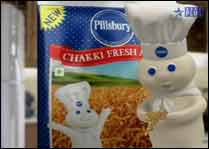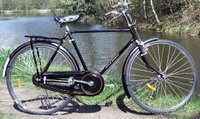Company: Maruti Suzuki
Agency : Hakudo Percept
A brand that ruled the Indian midsegment car market will be laid to rest very soon. Maruthi Zen which was considered to be one of the best cars on the Indian roads after a long life of 13 years have become redundant. It is a sad news for all Zen owners who still
 vouch for this hatchback. Marketers will also be sad because it was a marketing failure and not a product failure. The good old zen is still valued as precious by its owners.
vouch for this hatchback. Marketers will also be sad because it was a marketing failure and not a product failure. The good old zen is still valued as precious by its owners.Zen was launched in India in 1993. Instantly this premium car became the favorite of the upwardly mobile Indian middle class. The was something special about this jelly bean shaped car and the driving and maneuvering quality was nothing but superb. In cities where there is bumper to bumper traffic, the Zen was the most preferred one.
During the nineties all the cars from Maruti ruled the segment because of lack of competition. Then came Santro and Zen had a competition. Although initially people scoffed at the tall boy design of Santro, slowly through smart marketing, Santro began to eat into Zen's market. Then came the major blow in the form of Indica which changed the rules of the game in the hatchback segment.
Zen came out with Zen LXi in 2001, but the market share was slowly declining. The major reason being, the owners of Zen were getting older and Zen was missing out on the new generation. There was no excitement about Zen. Maruti is a poor marketer with good products. All their products are of exceptional quality and all their marketing campaigns ( including the campaign of new Swift) is exceptionally poor. Customers buy it because it is good.
While the competitors are gaining the share of mind of consumers using smart marketing campaigns, Zen was no where in the picture. The launch of Zen with round headlamps was a major disaster.
During 1999, Maruti launched Wagon R and 2000 saw the launch of Alto, With these products, Zen was left in a no man's land. The segmentation became fussy. Since there was no clear positioning for Zen, the new launches proved to be a major blow to this brand. With the launch of sporty Swift , Zen has now become a liability for Suzuki's portfolio.
To arrest the slide of the market share of zen, Suzuki, launched a redesigned Zen in 2003 with a new look with much fanfare. The campaigns were shot in Paris. The logic was to attract the new generati on and the positioning was " strong sleek and sexy". The base line was " Surrender to the new Zen". The campaigns was lousy never excited the new generation. The existing users were pissed off because the resale value of their old beauty crashed. The new look Zen also bombed because of poor marketing.
on and the positioning was " strong sleek and sexy". The base line was " Surrender to the new Zen". The campaigns was lousy never excited the new generation. The existing users were pissed off because the resale value of their old beauty crashed. The new look Zen also bombed because of poor marketing.
 on and the positioning was " strong sleek and sexy". The base line was " Surrender to the new Zen". The campaigns was lousy never excited the new generation. The existing users were pissed off because the resale value of their old beauty crashed. The new look Zen also bombed because of poor marketing.
on and the positioning was " strong sleek and sexy". The base line was " Surrender to the new Zen". The campaigns was lousy never excited the new generation. The existing users were pissed off because the resale value of their old beauty crashed. The new look Zen also bombed because of poor marketing. Infact their was no need for such an upgrade because the problem was with positioning and not the product. Zen was known for its power, easy driving and quality. It never looked sporty and the colors were lousy. Zen could have excited the younger generation just by introducing a sporty variant with some fantastic colours. The colors of Zen were never exciting.I still believe Zen have that premium touch to it. So with some smart colours and with some sensible advertisements, Zen could have zoomed. The positioning can be a sporty and a smart car for the urban professionals. But alas....
Zen is a classic example of how poor marketing can kill a good product.










